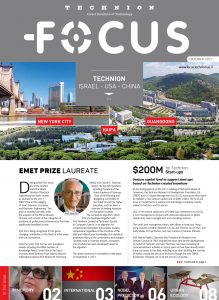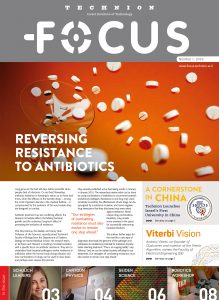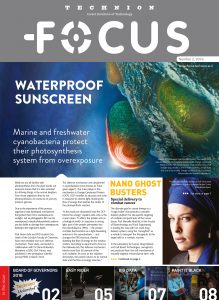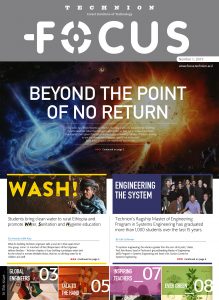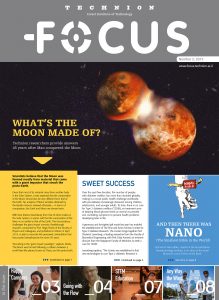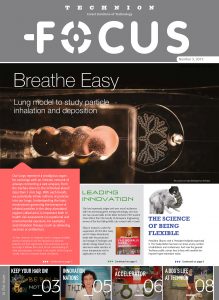Big Step for the Future of Medicine: Biomedical Informatics Conference at the Technion
At the international conference, experts discussed the use of Big Data and deep learning in numerous fields related to development of “precision medicine”
On December 13-14, the Technion-Israel Institute of Technology hosted the first international conference on biomedical informatics – a field based on computerized analysis of the overall data amassed by academia, hospitals and health funds. The use of deep learning, Big Data and other technologies gives experts the ability to analyze information in an intelligent, rapid and efficient manner. The goal is to precisely adapt treatments to specific patients.
Technion President Prof. Peretz Lavie congratulated the organizers, Dr. Kira Radinsky and Prof. Roy Kishony, Director of the Technion’s Lorry I. Lokey Interdisciplinary Center for Life Sciences and Engineering. “We’re living in a fascinating era for scientific research, an era where extensive data is used to improve diagnoses and treatment. There is no doubt that Israel in general, and the Technion in particular, is an excellent location for such a pioneering conference, since the Technion is one of the only technological institutions in the world with its own medical school. Our cooperation with China, where the Guangdong Technion Israel Institute of Technology was recently inaugurated, opens us to a goldmine of data.”
Serial entrepreneur Jonathan Adiri gave a keynote lecture about “The Era of Permanent Revolution.” Adiri was Pres. Shimon Peres’s Chief Technology Adviser, a position that enabled him to build ties in the U.S. and Korea. He was president of the inaugural class of Singularity University (2009), which was founded by NASA and Google, and is the founder of Healthy.io, a medical diagnostics company based on the use of Smartphone cameras, that was recently mentioned in The Economist.
Adiri described the challenges that will be encountered by tech companies in the near future, when Smartphones will be used for inexpensively and quickly diagnosing diseases. “We are in the midst of a time of perpetual revolution,” he said. “Innovation revolutions don’t happen if they aren’t economically beneficial. For example, the drone market experienced a drastic plunge in prices – parts that cost $100 in 2007 now cost 50 cents. The computing power of the iPhone 4, which currently costs hundreds of dollars, is stronger than the computing power of the first mission to the moon. The success of reusable space launchers is so huge because of the economic considerations: these launchers save enormous amounts of money. Imagine that every time an airplane lands after a flight, it would be destroyed – this was the situation with previous space launchers. Israel is very well positioned for this era, for shaping the future and spreading knowledge, thanks to an efficient and decentralized system of decision making.”
Hanna Bayer, the Chief Scientist of New York University’s HUMAN project , which will be launched in 2018 in New York City presented the project that will collect information from approximately 10,000 people from all five boroughs for a period of 20 years. The data will be collected on a single research platform and will be used by researchers from all over the world for analyzing data connected to health, education, genetics, the environment and lifestyle. The aim is to identify the links between different variables using Big Data technology. According to Bayer, “instead of looking for specific data and connecting them to a person’s health, we will continuously monitor a large spectrum of data related to a person’s biology, genetics, behavior, environment, food intake and exercise regimen, as well as what he buys and with whom he meets. The idea is to measure everything that can be measured, based on a large sample and over a long period of time, in order to reach conclusions that can be implemented and will help improve human health.”
Dr. Ran Balicer, Director of the Clalit Research Institute in Israel, spoke about the future challenges in medicine from the point of view of the service provider. “Health funds and hospitals are contending with several large challenges simultaneously: the aging of the population, the large number of diseases and harsh budget restrictions. A considerable part of the solution to these challenges lies in technology. Technology can help us prevent medical errors, which is the third most common cause of death in the world – before accidents, diabetes, drugs, etc. – by preventing unnecessary (or harmful) interventions, which currently account for about one-third of all medical procedures, and by carrying out procedures not currently done today. Clalit Health Services, which is responsible for 53% of people insured by Israel’s health funds, provides hospital care in addition to community medical services. We have accrued an enormous amount of data, and our goal is to harness this information for the good of the patient. We will do so through proactive medicine that invites the patient to carry out critical tests before he feels that there is a problem and before the symptoms appear. We have had several successes in predicting diseases and adapting treatment to specific patients, and we do everything in order to improve our use of technology for the patient’s benefit.”
Dr. Varda Shalev, Director of Maccabi Health Care Services’ Institute for Research and Innovation, said that “in the past, the medical staff wanted information. Today, there is plenty of information and what they’re lacking is the tools to analyze the information. Maccabi has approximately two million members – a relatively large and stable cohort – and all tests are carried out in a single lab. That’s an excellent base for using innovative technology to analyze data, and we are expending a great deal of effort to do so in the most effective ways. One example is our cooperation with the organizer of today’s conference, Prof. Kishony, analyzing urine tests carried out all over Israel.”
Conference organizers: Dr. Kira Radinsky and Prof. Roy Kishony of the Technion’s Lorry I. Lokey Interdisciplinary Center for Life Sciences and Engineering
Dr. Kira Radinsky, who began studying at the Technion’s Computer Science Faculty at the age of 15, completed three degrees at the Faculty: a B.Sc. as part of the Rothschild Scholars Program for Excellence, and a Masters and Ph.D. under the supervision of Prof. Shaul Markovitch. Already while pursuing her Masters degree, Dr. Radinsky developed a metahodology for predicting future events based on Internet queries. Based on this methodology, she founded the company SalesPredict, which was eventually acquired by eBay. Companies hire SalesPredict to forecast the probability of selling products to other companies, and following its acquisition, Dr. Radinsky was appointed eBay’s Chief Scientist in Israel. She is currently a guest professor at the Technion.
At the conference, Dr. Radinsky’s lecture presented possible ways to harness deep learning and big data for identifying various causal links related to medicine. “Rather that looking for specific links based on our hypotheses, we can let the computer find such links without guidance, based on a huge sample set. For example, in this way we were able to find unknown side effects of medicines and combinations of medicines. I believe that in the future we will not only be able to examine the effects of combining medicines but also develop new medicines in this manner. It’s important to point out that this is a completely new type of science that isn’t based on experiments that test hypotheses but, rather, on data that determine the research’s hypothesis.”
Prof. Roy Kishony is the head of the Lorry Lokey Interdisciplinary Center for Life Sciences and Engineering at the Technion and a faculty member of both the Technion’s Biology and Computer Science departments. In 2016, Prof. Kishony published an article in the journal ‘Science’ where he presented an innovative platform that makes it possible to precisely track bacteria’s evolution while they are developing resistance to antibiotics. This platform was the first demonstration of its kind showing the connection between genetic adaptation and spatial constraints.
Prof. Kishony’s lecture at the conference discussed the necessary processes given the fear of a post-antibiotic era when bacteria won’t react anymore to antibiotic drugs. “We must not only know the bacteria’s current resilience level, but also which resilience level they are expected to develop, and maybe initiate a reverse process that will prompt them to develop renewed sensitivity to the drug. This is ‘anticipatory medicine’ that will give us ways to diagnose the disease before its outbreak – a diagnosis that will make it possible to predict the future and create a treatment that is better adapted to the patient.”
The students Lindsay Moore and Idan Yelin were the winners of the scientific posters competition that took place at the conference. Lindsay Moore poster presented the Alignment of Single-cell based development trajectories, and Idan Yelin poster presented Genomic proof of probiotic transmission from capsule to blood in patients with Lactobacillus Rhamnosus GG Bacteremia.
.
The Evolution of Bacteria on a “Mega-Plate” Petri Dish from Harvard Medical School on Vimeo.

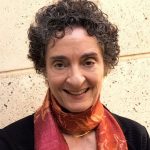



 Sealantis, a leading innovator and developer of absorbable surgical adhesives and sealants, announced today that it has received CE Marking approval (“CE”) for its Seal-G ® Surgical Sealant (“Seal-G”), the first and only alginate sealant designed specifically to help reduce leaks after gastrointestinal (“GI”) procedures.
Sealantis, a leading innovator and developer of absorbable surgical adhesives and sealants, announced today that it has received CE Marking approval (“CE”) for its Seal-G ® Surgical Sealant (“Seal-G”), the first and only alginate sealant designed specifically to help reduce leaks after gastrointestinal (“GI”) procedures. 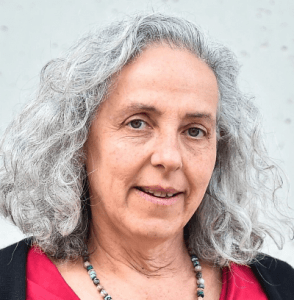
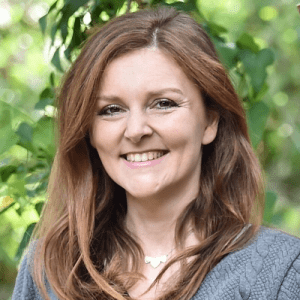
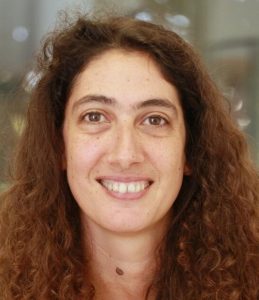
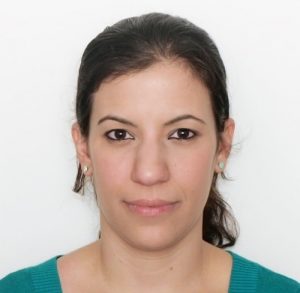

 Technion and the Israel Space Agency announced that in late 2018, a group of three nanosatellites, which will fly in controlled formation, will be launched for the first time into space. The satellite formation will be launched by the Dutch company Innovative Solutions In Space, which specializes in launching nanosatellites on the Indian PSLV (Polar Satellite Launch Vehicle).
Technion and the Israel Space Agency announced that in late 2018, a group of three nanosatellites, which will fly in controlled formation, will be launched for the first time into space. The satellite formation will be launched by the Dutch company Innovative Solutions In Space, which specializes in launching nanosatellites on the Indian PSLV (Polar Satellite Launch Vehicle). 
